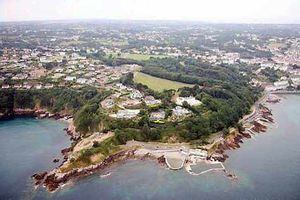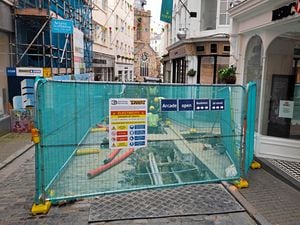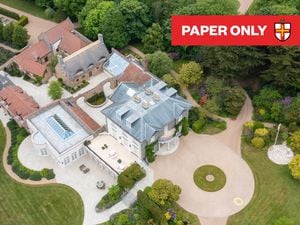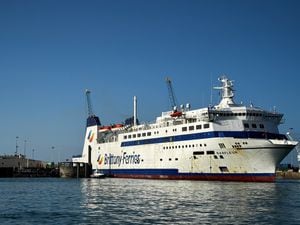The Fort George overture
Continuing his series of property articles, estate agent Trevor Cooper looks at the history of Fort George...

Continuing his series of property articles, estate agent Trevor Cooper looks at the history of Fort George...
Construction of Fort George began in 1780 and was completed 200 years ago, in 1812.
Named after the reigning monarch, King George III, the fort was built to accommodate the increased number of troops stationed in Guernsey in anticipation of a French invasion during the Napoleonic Wars.
It has also served as a garrison for the British Army, a base for the Guernsey Militia and became HQ for the German Luftwaffe radar early warning service during the Second World War occupation of the island.
The States agreed to purchase Fort George from the British War Department in December 1958, and first deliberated selling a large part for residential development in March 1960.
One year later and the Fort George Development Committee made its recommendations that designated parts would be sold for between 130 and 145 residential properties to be built as a 'high standard residential estate'.
But there was widespread opposition to the proposal, according to a 2011 States consultation's Supplementary Document entitled The Development of the Open Market.
Objections came from the general public and within the States itself. A requete against the plans had a 10,023 signature petition – 21% of the island's population at the time.
The petition raised concerns about the impact the development would have on the island as a whole. Some of the concerns included, 'a widespread feeling that it is undesirable to bring so many English families into the island and lodge them in a small, closed community where they will be cut off from contact with the people of Guernsey'.
It was, to quote, also considered, 'ridiculous to suppose that any millionaire will choose to live in close proximity to one another in the 130 dwellings Messrs Rush and Tompkins (the principal development company) have been permitted to build. In giving permission to Messrs Rush and Tompkins to erect houses on the coastline the States of Guernsey have discriminated against their own people.
'It is an injustice to have one law for Guernsey and a different law for English immigrants. In view of the serious housing shortage in Guernsey it is a studied insult to the people of Guernsey to invite 130 outside families to take up residence in the island at this time.'
The timing of the proposal was also criticised. 'The proposal to sell the Fort George property to an English firm was presented to the States on the eve of a General Election and passed by the States with a narrow majority so that the public was presented with a fait accompli and no time was allowed for opinion to crystallise on the matter. The plans were only available for public scrutiny for a few days.'
The Advisory and Finance Committee was quick to dispel these concerns: 'The States are very much alive to the fact that in the years ahead heavy annual expenditure will have to be faced for the social services generally. The members have known full well that these improvements have meant and will continue to mean heavy expenditure which will have to be met year in and year out, in bad times as well as good.
'The committee deprecates the references which are constantly being made to "millionaires" in regard to Fort George. A person does not have to be a "millionaire" to live in a house worth £10,000. Fully developed, the development could make an important contribution to Guernsey's potential as a residential resort and consequently to that strengthening of her economy which is certain to be needed in the future.'
The number of houses to be built would have fallen by over half to just 60 had the requete been successful. But the requete was heavily defeated and the proposals were approved despite the opposition.
Two months later, however, the States directed the Fort George Development Committee to prepare revised plans excluding the Fort (Belvedere) Field and the Citadel from the areas designated for development.
A residents' club house had also been intended to be built as part of the development, but that plan was dropped and two houses were built in its place.
There were restrictions about houses having to be completed within one year of being started and no house was permitted to be less than 1,30 sq. ft in size.
One of the quirky rules that still applies is that owners shall 'not cause or permit any clothes, household linen, blankets or other articles of like nature to be hung out or exposed on the premises as to be visible or seen from the road'.
Fifty years on and, in spite of the early resistance, Fort George has successfully fulfilled its potential as a highly desirable residential development.
House prices were £11,500 back in the Sixties – hugely expensive at the time – and now top £5m.-plus.
The whole development comprises less than 10% of the island's open market housing stock, yet Fort George holds the high ground as a prestigious showcase of modern properties that continues to evolve and complement Guernsey's enviable reputation as a highly sought after location.





